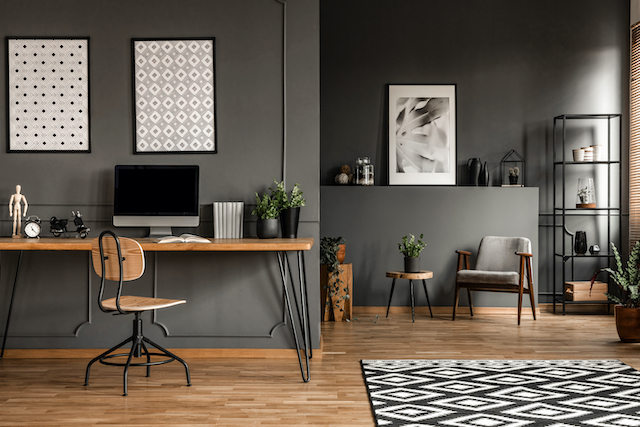Home Office Trends: Ideas to Maximize your Space

Working from home used to be a last resort, mostly when a child fell sick or the cable company gave you a vague eight-hour window.But with the onset of the pandemic, working from home on a consistent basis has become an unexpected reality for millions of Americans.With that in mind, a study by theUSC Center for the Digital Future found that Americans are facing new issues as they struggle to balance work and life in the same space.When asked about problems while working remotely, 45 percent of study respondents noted the distractions of working from home, such as children, pets, phone calls, and neighbors.Thirty-one percent said they did not like the erosion of the boundary between work and home, while 18percent were concerned about the overload of online calls and conferences.If you’re facing a permanent shift to work-at-home, you might bethinking, “Yikes, we don’t have room for an office.” Never fear—even if you’re short on space, there are plenty of ways to wedge a workspace into your home, and even make it work with your home décor. Here’s how to make it work, according to tips from experts offered to REALTOR.com:
Pick a prime spot to work
The first step should be to consider how you’ll use this workspace, advisesAnne Reagan, editor of the Seattle-based Porch.com: not just what kind of work you do, but also what kind of home responsibilities you need to monitor.“If you plan to manage the household, choose a spot near the family gathering place, which is often the kitchen,” she explains. A space-saving home office can be tucked neatly into a built-in hutch or secretary desk, allowing you to work on a presentation while monitoring homework at the nearby kitchen island or table.This type of office allows you to easily revert the area back to “kitchen” space at the end of the work day.
Sneak in a desk under the stairs
No extra rooms on hand? An unused area can be transformed into a home office with a little creativity.A good-sized nightstand (minus all of those unread back issues of TheNew Yorker) doubles as a desk, or you could try setting yourself up on a few shelves under a staircase.“If your dining room is seldom used, designate the table as your desk and then carve out a space in the credenza or hutch to store your office equipment,”says Reagan.
Hit the wall
Not enough square footage as it is? Try a wall-mounted desk. Take measurements on an empty wall fora painted wooden option with side cubbies and a shelf for extra storage.
Create storage that doesn’t scream ‘office’
If you are extremely limited on space, look for stackable storage items or keep documents filed away in a closet, advises Kelly Richardson, an interior design expert in Santa Rosa,CA. Or have a drawer custom wired to hold a printer/scanner and other electronics.Additional storage solutions include crates for paperwork, filing cabinets that double as side tables, a blanket chest or foot locker for supplies, and, of course, using a laptop over a desktop (it can be slipped into a drawer).
Choose your seat
If you need to sit and work for more than a few hours at your home office, an ergonomically designed chair is highly recommended,” notesReagan. A good chair that conforms to your body is best, and even better if it has an adjustable seat and arms for maximum comfort.
Let there be light
The glow from your computer is all well and good, but you’ll also need task lighting for other kinds of work.“It’s better for your eyes to have a light that you can easily move to highlight paperwork,” Reagan notes.“Natural lighting is always preferred, but for a home office, I would choose a modern, sleek version of the traditional desk light,” Richardson suggests.
Make it comfy
If you have to strain or hunch todo your work, your home office will soon feel like a torture chamber. The solution? Smart, ergonomic details that help prevent work-related pain.For example, a keyboard that’s placed too high can put stress on your wrists(consider a drawer or platform that sits just below desk level). A footstool elevates the legs and eases pressure in the low back (choose one that tilts and adjusts to the height of your chair). And for extra lumbar support, test-drive some of the pillows you already own or seek out one specially made for this purpose (an ergonomic one fits the curvature of the spine).










